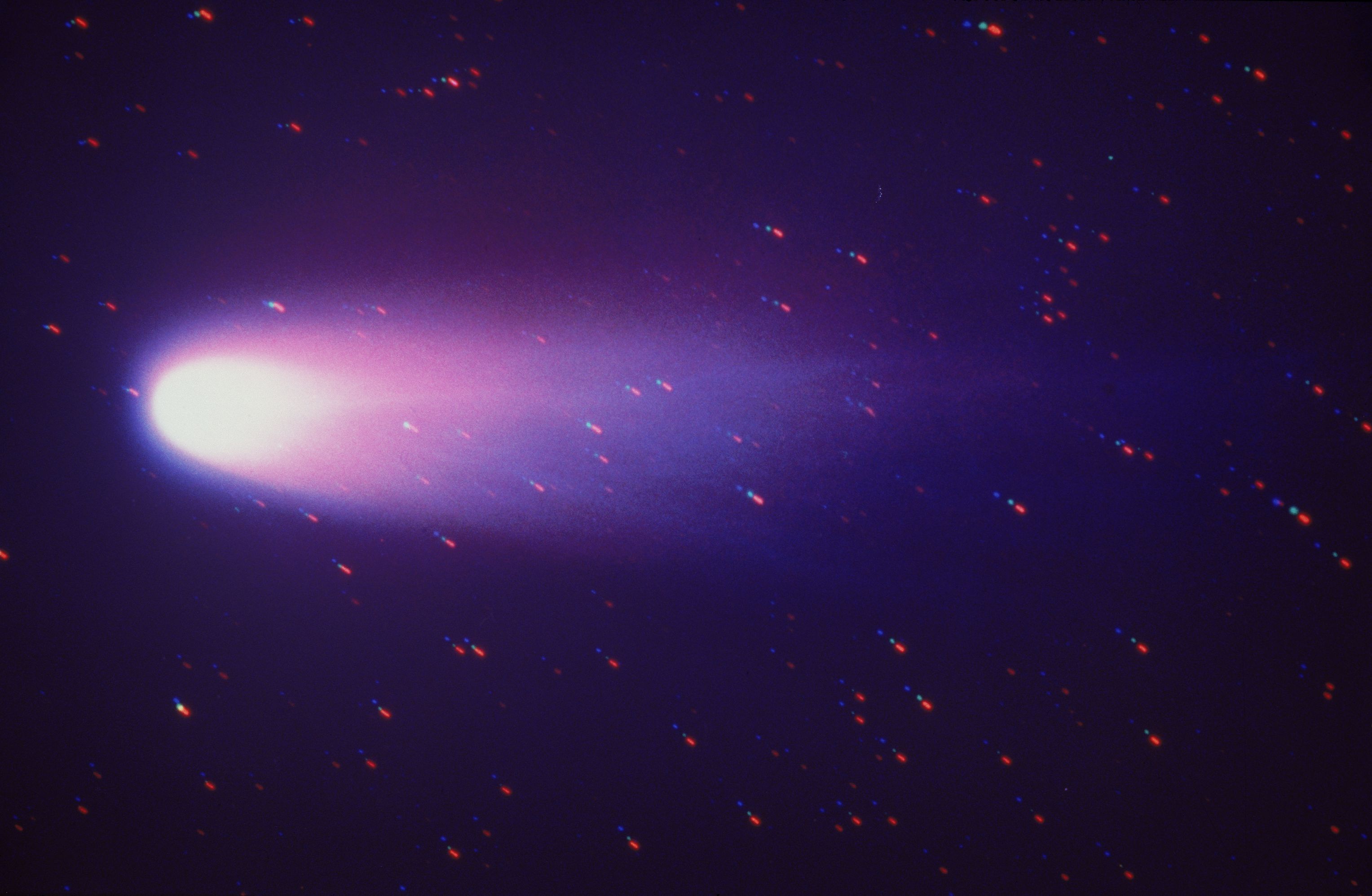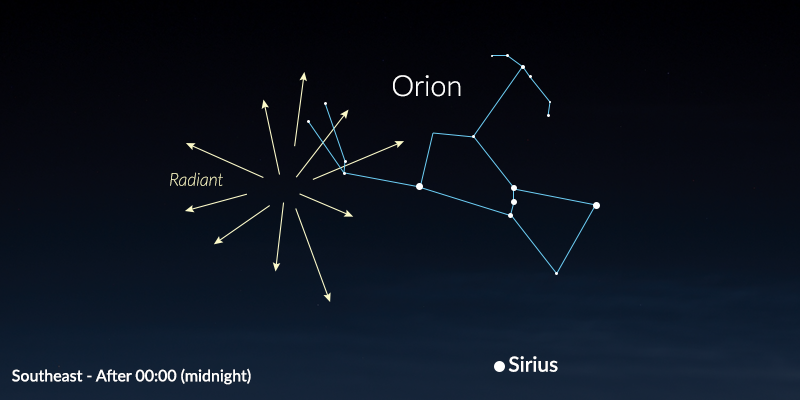The Orionids
The Orionids, like all meteor showers, are named after the constellation in which they appear to come from, which in this case is Orion. Remnants from this shower come from Halley’s Comet, officially designated 1P/Halley. Halley’s Comet is the only known short-period comet that is clearly visible to the naked eye from Earth. This comet swings by the sun every 76 years. Halley last appeared in the inner parts of the Solar System in 1986 and will next appear in mid-2061.

Halley’s Comet © ESA
Where? When? How many?
The next few nights will provide the best Orionid rates of the year. The peak is predicted for the night of October 21/22 but the maximum is not sharp so rates will be near maximum between October 20-24. The exact rates are difficult to predict for this shower. Normally, around 20 shower members can be seen each hour before between midnight and dawn near maximum. 11 years ago rates equaled the Perseids with 75 Orionids appearing each hour. Currently though rates have fallen back down to normal so 20 Orionids each hour is a good guess under suburban skies. If you watch from town only the brighter meteors will be seen so expect to see only 10 Orionids each hour.
If you watch the same place in the sky all Orionid meteors will have the same characteristics. They will move in parallel paths and will posses the same velocity. These paths will lead back to the radiant in Orion. These characteristics change if you look somewhere else. In general, Orionid meteors will appear to be swift unless you see them near the radiant or near the horizon. Also the paths will appear shorter near the radiant and near the horizon. Therefore it is advisable to have the Orionid radiant near the edge of your field of view so that you will see longer meteors. There are also other minor radiants active in Gemini, Leo Minor, and Lynx this time of year.
The radiant, located on the Orion-Gemini border, rises near 2200 (10pm) local daylight time. This is not the best time to see them though as some of the activity will occur beyond your line of sight. I would be better to wait until after midnight when this area of the sky has risen higher into the sky. At that time Orionid meteors can be seen shooting in all directions. As is standard for most meteor showers, the best time to watch this shower will be between the hours of midnight and dawn – regardless of your time zone.
This year, the first quarter moon sets in the late evening or near midnight on October 20, leaving the morning hours dark for meteor watching! In the predawn and dawn sky, look for Sirius, the sky’s brightest star.

Orionids’ radiant – SouthEast after Midnight
Meteor Shower?
Most meteor showers have their origins with comets. Each time a comet swings by the sun, it produces copious amounts of meteoroid sized particles which will eventually spread out along the entire orbit of the comet to form a meteoroid “stream”. If the Earth’s orbit and the comet’s orbit intersect at some point, then the Earth will pass through this stream for a few days at roughly the same time each year, encountering a meteor shower.
Because meteor shower particles are all traveling in parallel paths, at the same velocity, they will all appear to radiate from a single point in the sky to an observer below. This radiant point is caused by the effect of perspective, similar to railroad tracks converging at a single vanishing point on the horizon when viewed from the middle of the tracks.
 American Meteor Society
American Meteor Society
Last night I saw about 4. Night before that I saw 7 within half hour.
I really hope skies will be clear so I can watch again tonight!!!!
I’m from Mansfield Ohio btw.